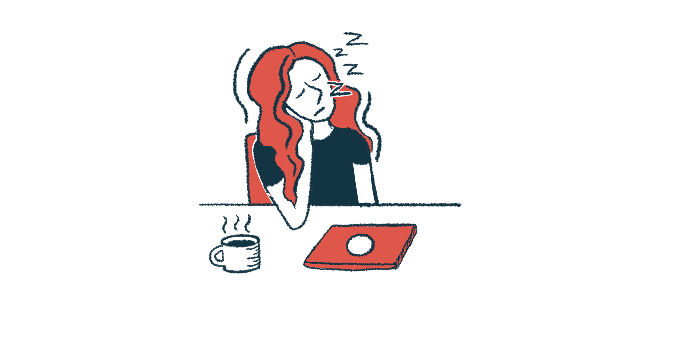Vagus Nerve Stimulation May Ease Fatigue in Sjögren’s Patients
People in small study reported relief after nearly 2 months of at-home treatment
Written by |

Vagus nerve stimulation (VNS), a procedure using a hand-held device to deliver electrical pulses to a nerve in the neck, eased fatigue for people with Sjögren’s syndrome in a small clinical trial.
“Our data support further investigation into the role of [VNS] as a treatment for fatigue in patients with [Sjögren’s],” the researchers wrote.
Trial findings were reported in the study, “The Effects of Noninvasive Vagus Nerve Stimulation on Fatigue in Participants With Primary Sjögren’s Syndrome,” published in the journal Neuromodulation: Technology at the Neural Interface.
Treating fatigue in Sjögren’s syndrome with hand-held device
Fatigue — persistent feelings of tiredness and lack of energy, even when well-rested — is a common and burdensome Sjögren’s symptom. Many factors likely contribute to patients’ fatigue, including dysfunction of the autonomic nervous system, the branch of the nervous system responsible for regulating unconscious bodily processes like digestion and breathing.
The vagus nerve, a large nerve that runs down the neck, serves as a highway for many signals sent in the autonomic nervous system. VNS is a treatment approach, using a device to deliver electrical signals to the vagus nerve, first approved in the 1990s for use in epilepsy. It has since been explored in a range of conditions.
Here, a team led by researchers in the U.K. conducted a small trial to investigate whether VNS might help ease fatigue in people with primary Sjögren’s.
The double-blind study enrolled 40 patients with notable fatigue and divided them into two groups. In one, patients received VNS, given at the home twice daily in two-minute sessions, for about two months (54 days). People in the other group received a sham procedure mimicking the tingly sensation caused by VNS, but one that did not actually stimulate the vagus nerve.
VNS was delivered using a noninvasive device called gammaCore, which is authorized in the U.S. to administer VNS as a treatment for migraines and cluster headaches. Two of the study’s more than 20 authors are employees and stockholders at electroCore, the company that markets this device.
Fatigue was measured using three standardized numeric scales: the physical and mental versions of the Profile of Fatigue (PRO-F-Physical and PRO-F-Mental), as well as the Visual Analogue Scale of abnormal fatigue (fVAS).
Across all three of these measures, scores significantly decreased over the course of the study for patients given VNS. Specifically, median PRO-F-Physical scores dropped by 28%, PRO-F-Mental by 25%, and fVAS by 20%. By comparison, fatigue scores did not change significantly in patients given sham stimulation.
“The key analyses in this study showed a significant reduction in three patient-reported measures of fatigue with the active device but not the sham device,” the researchers wrote.
Other psychological and cognitive assessments generally did not differ between the groups, though small positive effects were seen in a neurocognitive test called digit span, which requires a person to memorize a sequence of numbers.
In additional analyses, researchers noted that a measure of vagus nerve activity, called alpha reactivity, correlated with improvements in fatigue scores among patients given VNS, but not in those treated with the sham device.
“The relationship between fatigue and alpha reactivity observed deserves further investigation in the future,” the researchers wrote.
Scientists stressed that this study is limited by its short duration and small size, with 10 patients — seven in the active treatment group — not being included in the analyses largely because they either did not complete the study or were using the device incorrectly.
“The resultant data set available for analysis has reduced our statistical power, so we took care to avoid overinterpretation of results. Future studies would benefit from a much larger sample size,” the team wrote.






